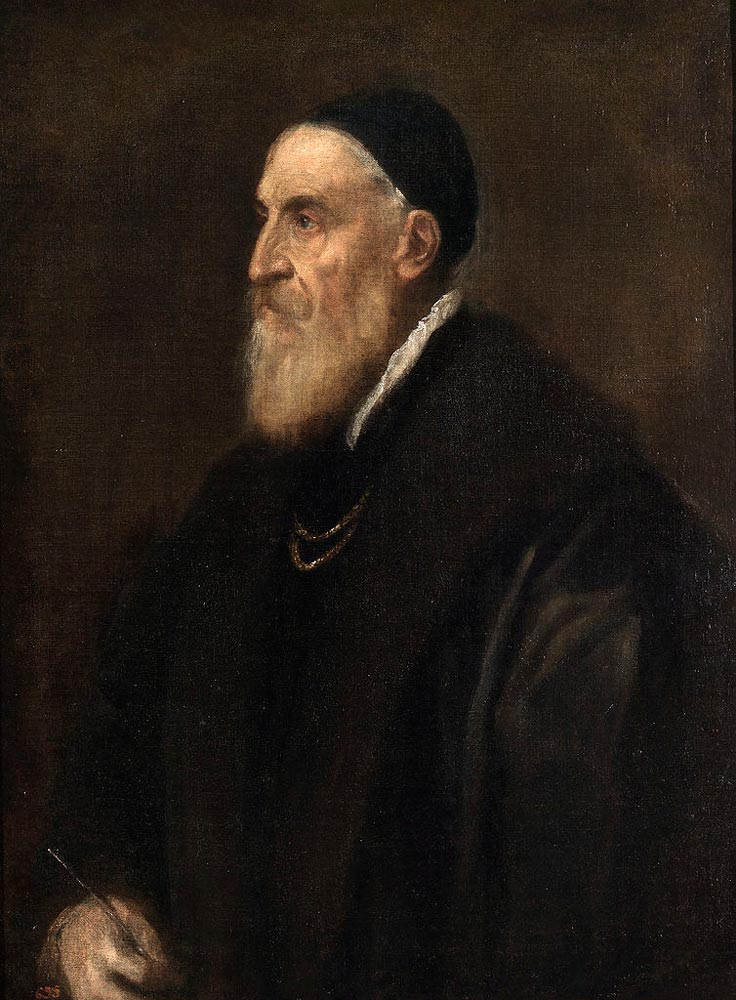| Self-Portrait | |
|---|---|
 |
|
| Artist | Titian |
| Year | c. 1567 |
| Medium | Oil on canvas |
| Location | Museo del Prado of Madrid, Spain |
| Dimensions | 86 cm × 65 cm |
| Famous Paintings by Titian | |
| Rape of Europa | |
| Sacred and Profane Love | |
| Pastoral Concert | |
| The Assumption of the Virgin | |
| Christ Carrying the Cross | |
| The Flaying of Marsyas | |
| Allegory of Prudence | |
| The Worship of Venus | |
| Self-Portrait | |
| View Complete Works |
The great Italian painter Titian was not merely an extraordinary talent, but his work was considered ground-breaking. His style was unprecedented for artists of that era, which was the early 1500s to perhaps 1560 or 1570.
Titian’s Self-Portrait which he composed in about 1560 depicts himself at approximately age 70 – a man withered by the years, lean, drawn, hook-nosed, and with a long gray beard. He is arranged in simple, yet luxurious, expensive clothing which could only have been owned by the wealthy man that he was.
Dominated by Rich Black-Browns
Titian’s Self-Portrait is oil-on-canvas. It shows him in three-quarter view, and he appears to be looking out into the middle distance with a contemplative, yet alert gaze. His robes are a rich black-brown and he wears a close fitting black full-skull cap.
Titian’s sallow skin and white beard form a significant contrast with the mostly black-brown environment of the painting taken up by his billowing garments. An expensive double-gold necklace and a semi-vertical slash of white collar are the only other points of light providing relief among the area beneath his facial features.
Unflattering or the Nobility of Age?
Some have called Titian’s portrayal of himself “unflattering,” but he was likely simply acknowledging that he was now an elderly artist who had lived a long life, achieved great status and wealth, and facing his twilight years with dignity.
The painting lacks some of the sharpness of his earlier works with broader brushstrokes and softer, almost blurred lines, but this was not due to infirmity or poor eyesight, art historians say. More likely it is the effect Titian intended – his sharp nose, piercing eyes and prominent cheekbones are relaxed, but not denied by this rendering.
In the lower left of the painting we can see a rather blurred version of Titian’s hand which grasps a paintbrush, a testament to his life-long profession.
Titian’s Self-Portrait now resides in The Gemäldegalerie, an art museum in Berlin, Germany. While its value is certainly “priceless” bidding for this masterpiece might start at $50 to $75 million.